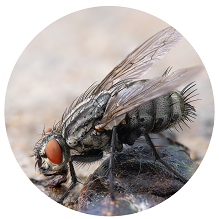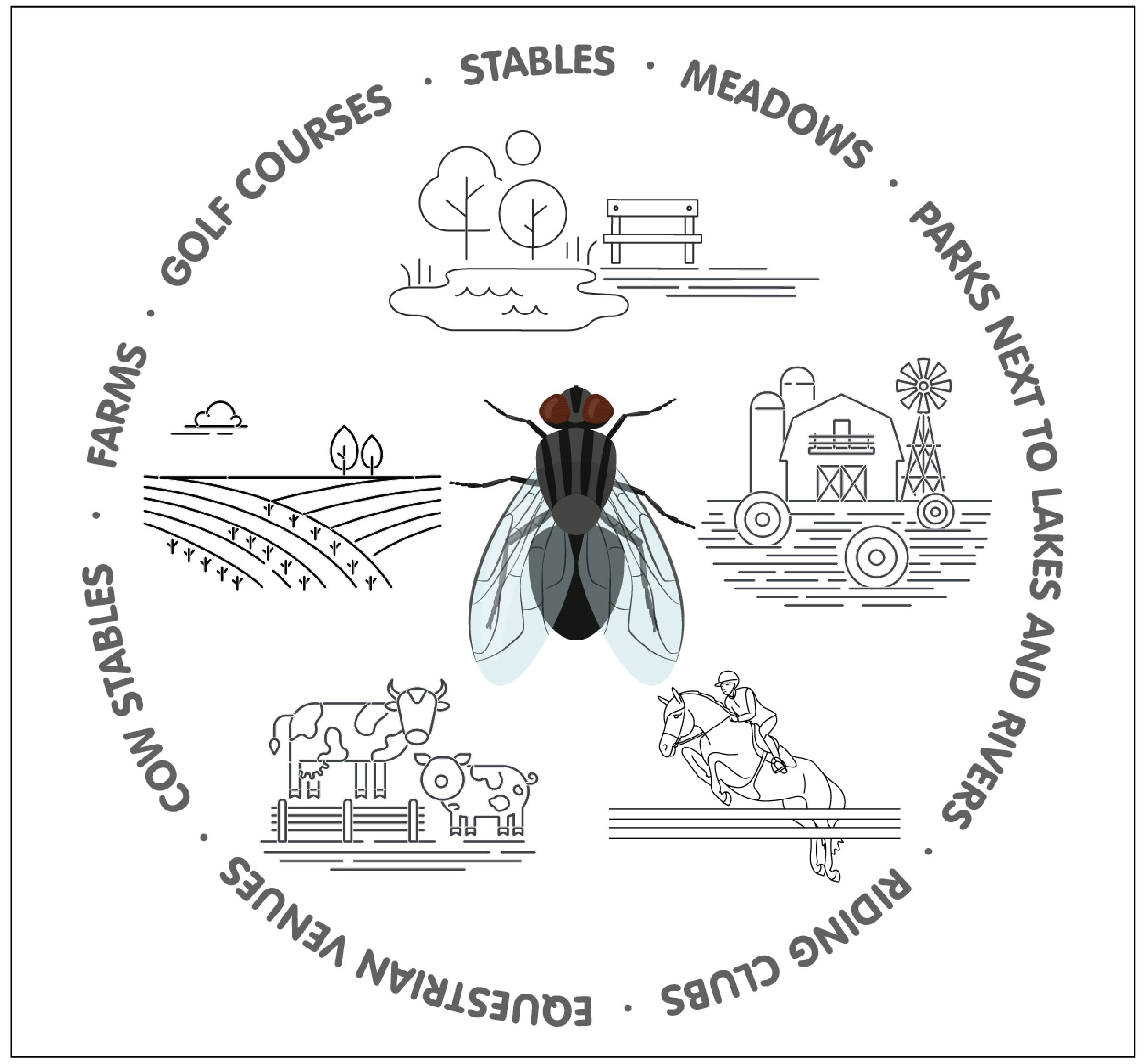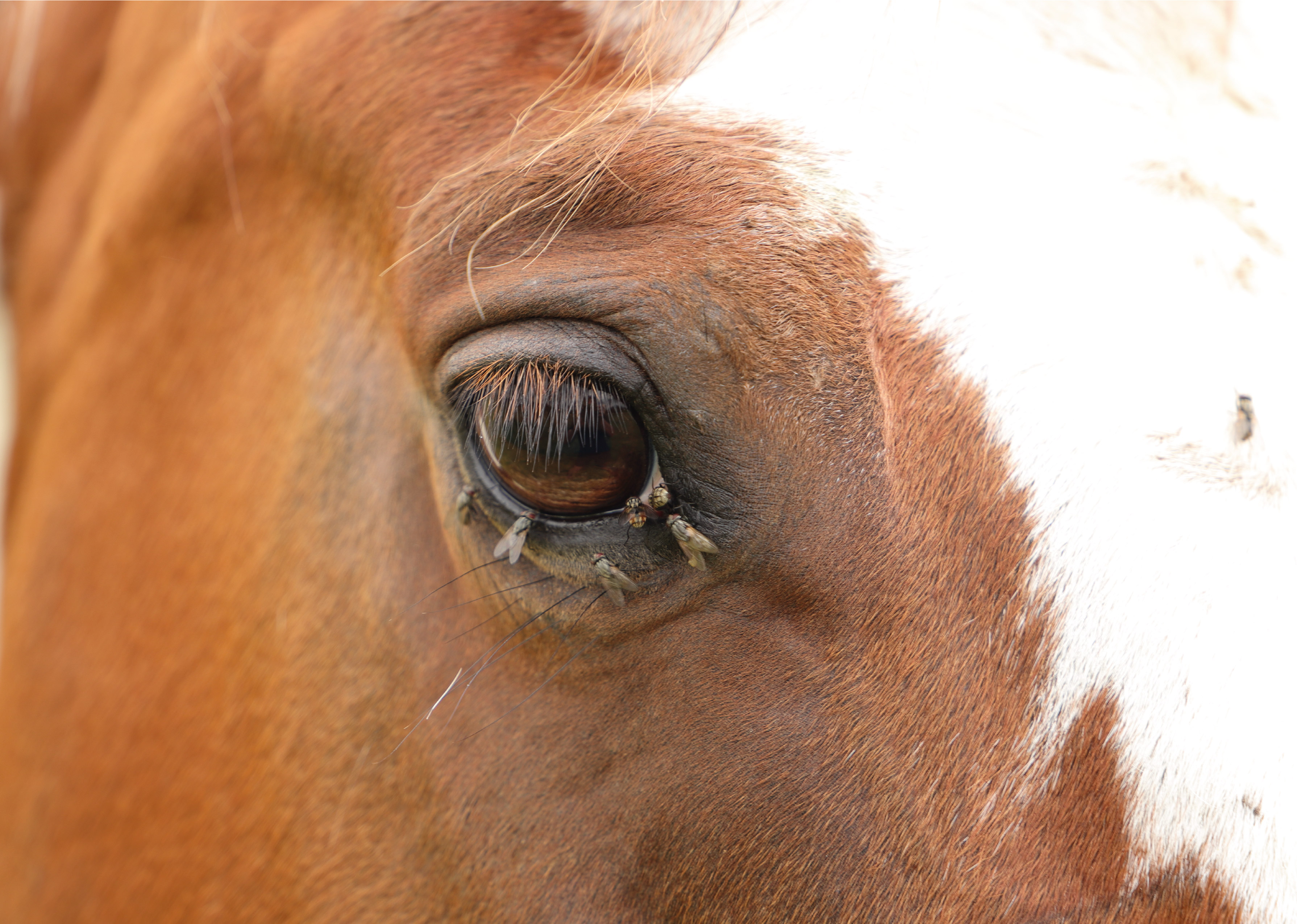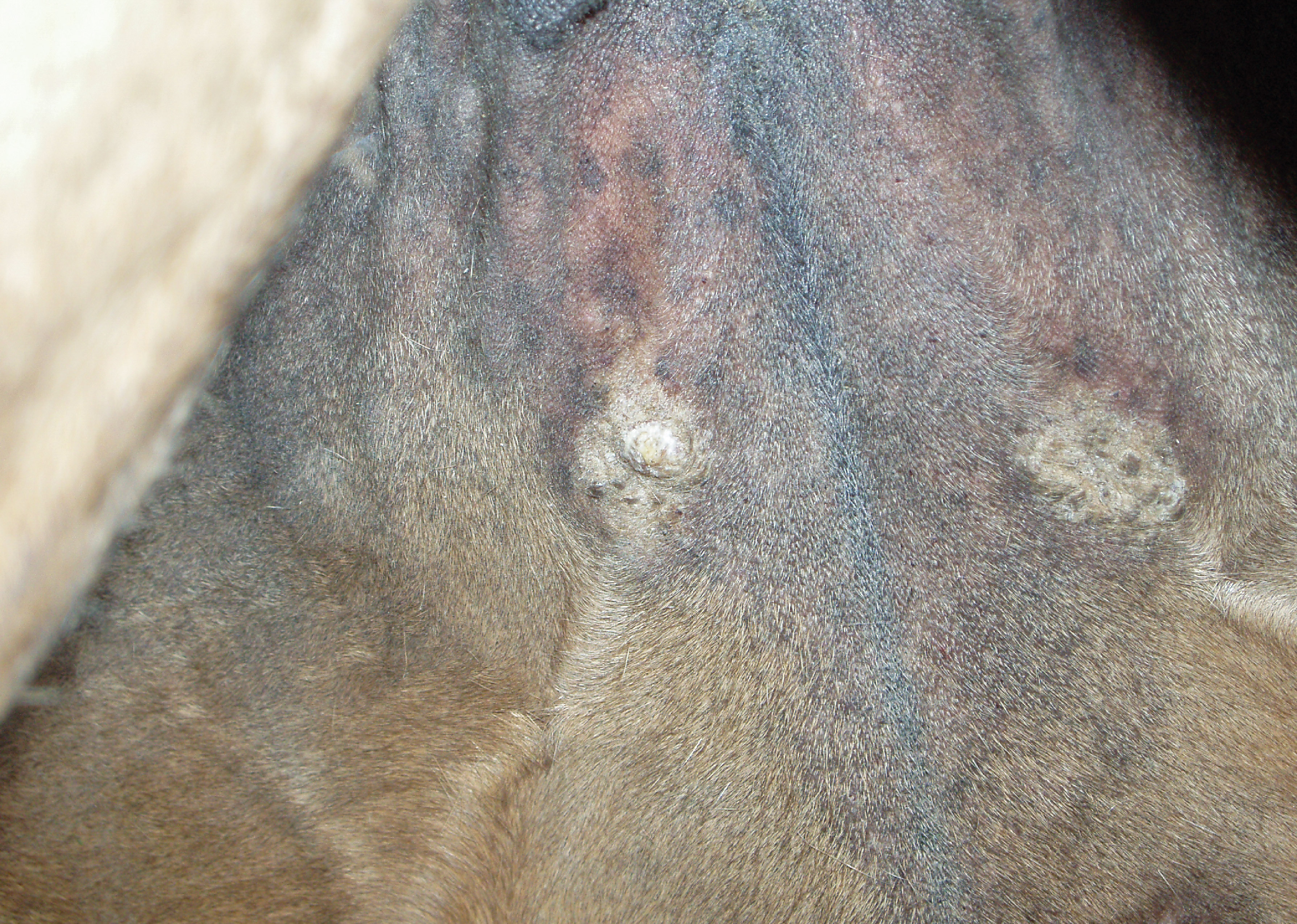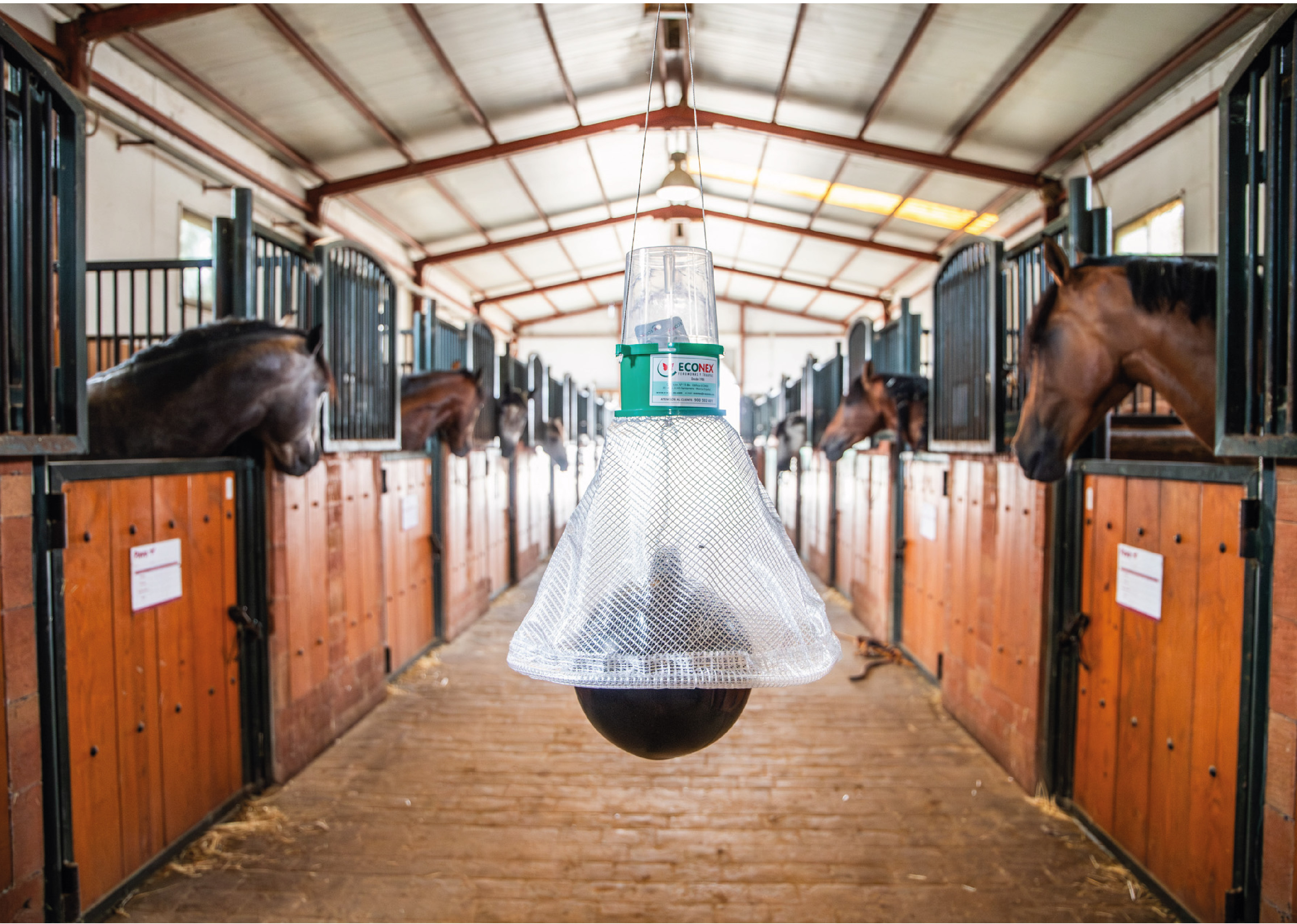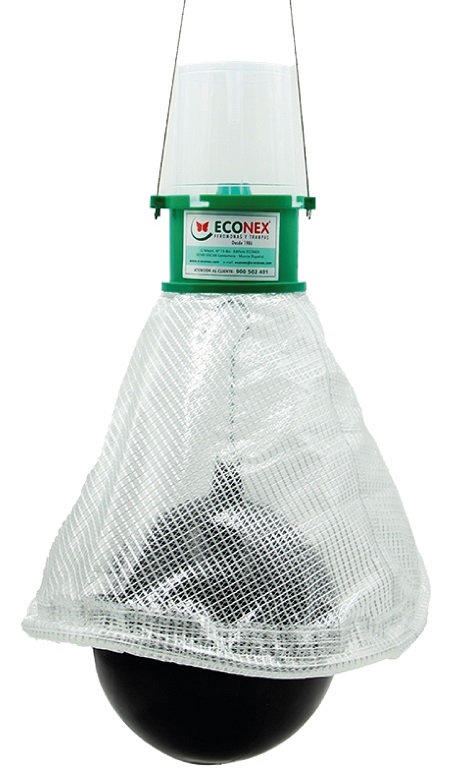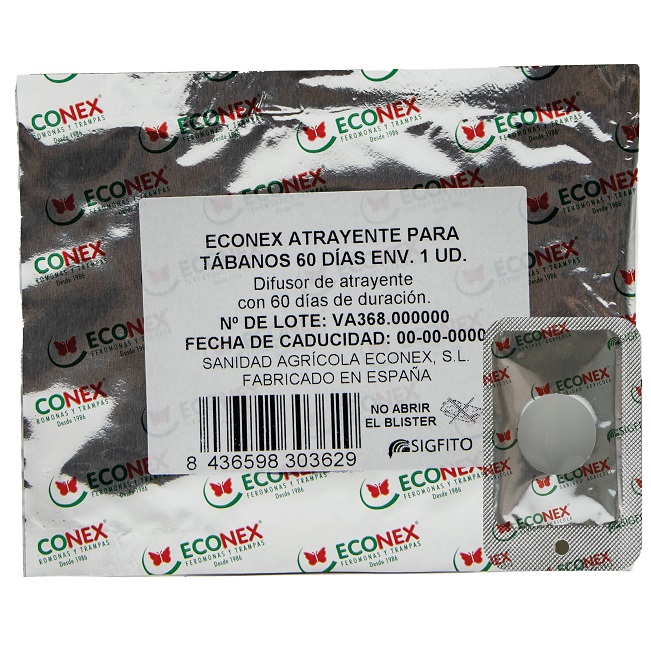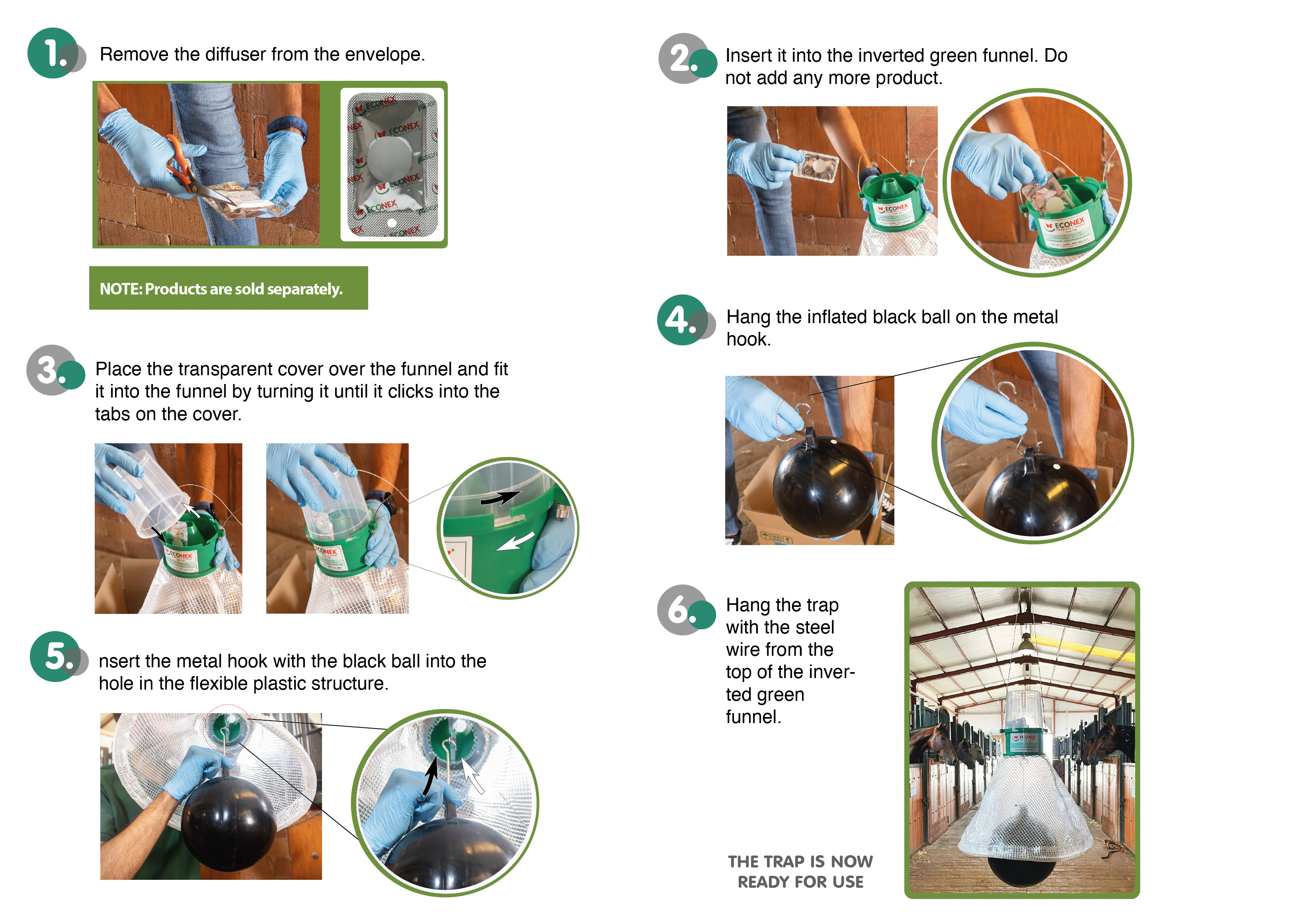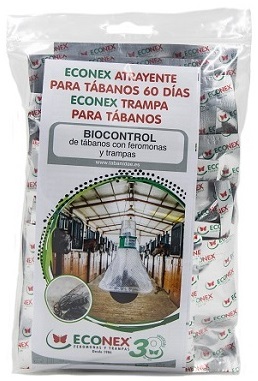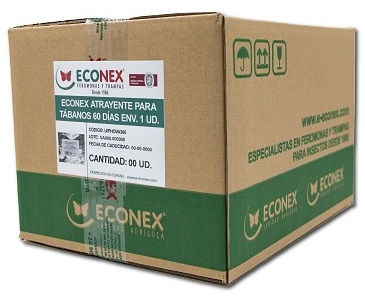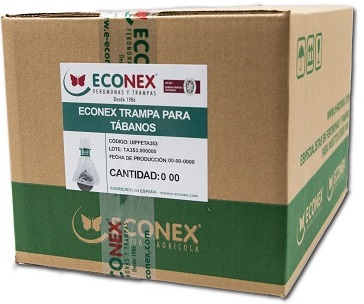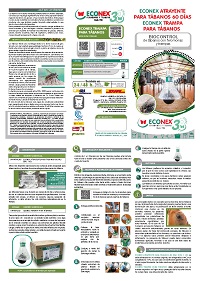Horseflies areflying insects belonging to the tabanidae family, known to
be major pests in rural areas, particularly in regions where livestock or
domestic animals are kept. Not only do these insect pests cause inconvenience
to animals and humans through their painful bites, but they can
also transmit diseases, affecting livestock productivity.
They are found almost everywhere in the world, although they prefer
humid climates and, once adults, the presence of animals is needed to
survive. They are commonly found on farms, cowsheds, meadows,
paddocks, riding clubs, cow barns, golf courses, lakeside and riverside
parks, etc.
Morphology and biology
Horseflies have a similar morphology to large flies, with a length of up to
2.5 cm. Their bodies are sturdy and dark (black, brown or grey) or, in some
cases, metallic green or yellow.
They exhibit sexual dimorphism, which influences two aspects of their
anatomy. The first is linked to their diet. Females are mainly haematophagous,
namely, they have powerful mouthparts that enable them to sting
(bite) mammals and birds. Males, on the other hand, feed only on sugary
substances such as pollen and flower nectar.
The second difference is in
the eyes. In males, they are grouped together at the top of the head, which
is not the case in females.
They have a single generation
per year, generally
appearing during the
summer months when
atmospheric conditions are
particularly favourable: hot
weather, high relative
humidity and low pressure.
They need soggy soil to
develop their eggs, larvae
and pupae.
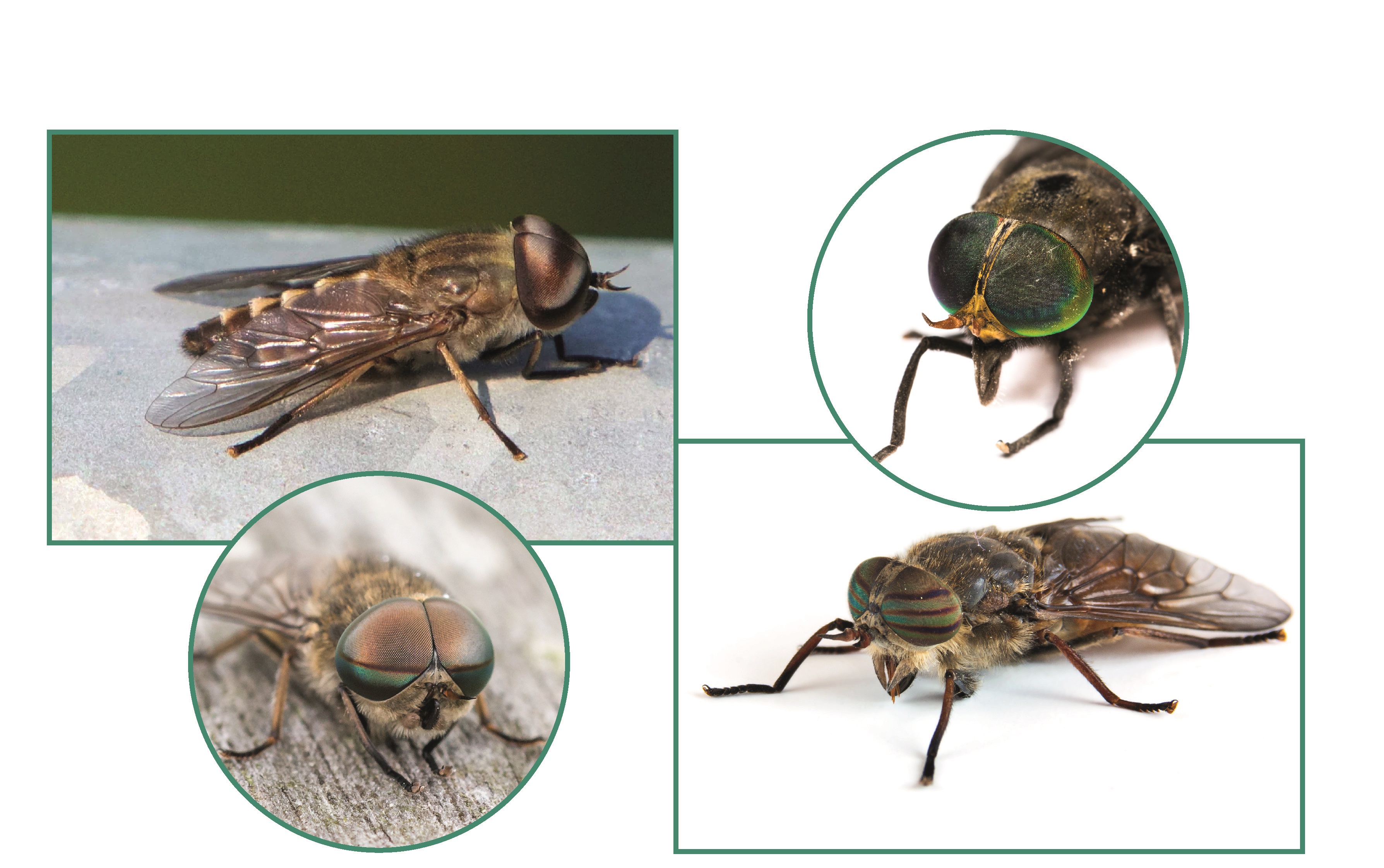
Morphology details of horseflies. Left: male without separation between the eyes. Right: female with separation between the eyes.
The latters are initially white, then turn brown or black within a few hours;
they are generally elongated and cylindrical and measure between 1 and
3 mm in length. They take a week to transform into nymphs, where they
hibernate until summer, when they hatch into larvae.
The life cycle of
horseflies varies according to environmental conditions, but it generally
lasts from a few weeks to over a year. Adult females live for 30 to 60 days,
while males have a shorter lifespan, dying after mating.
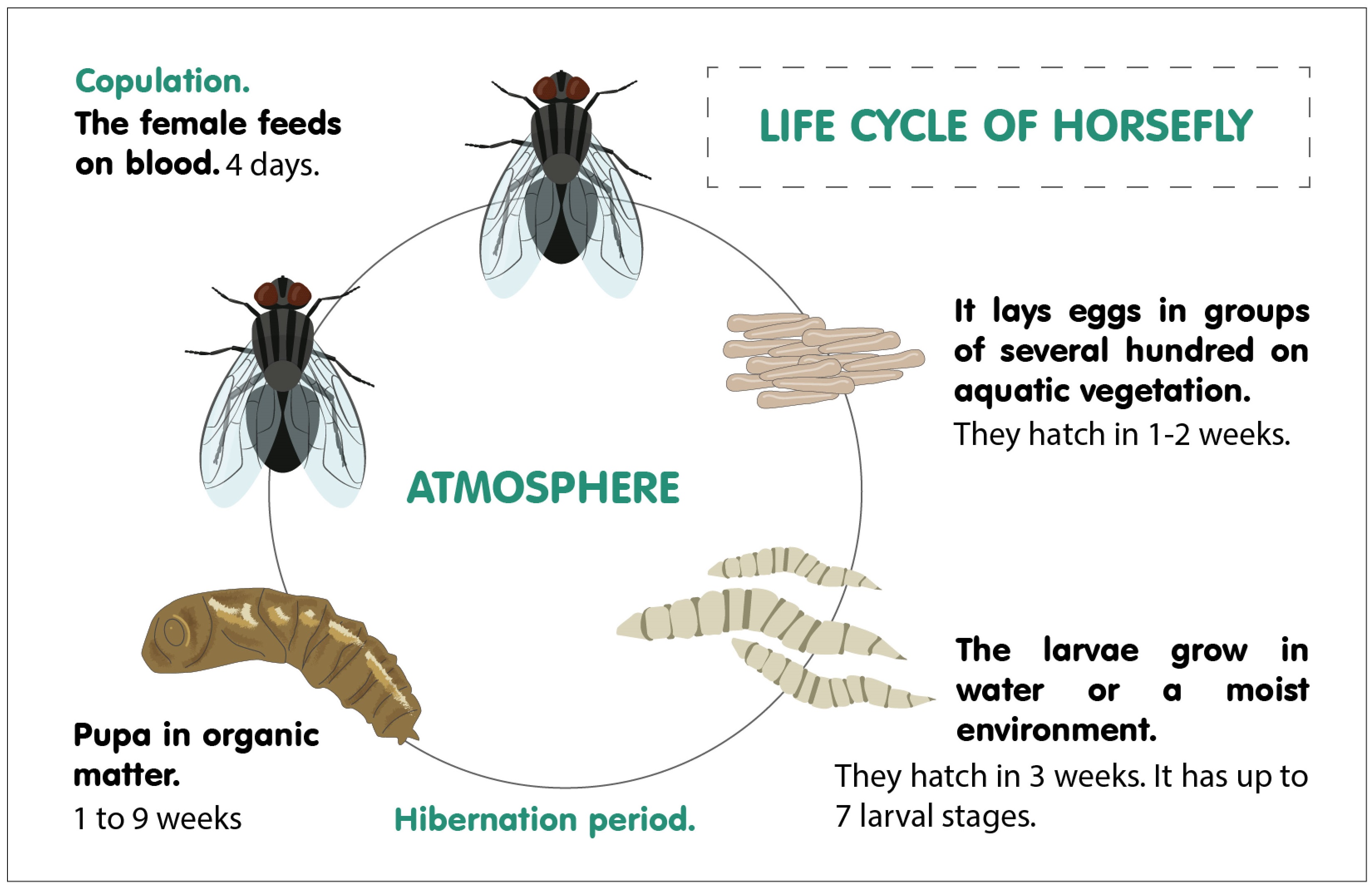 Life cycle of horseflies
Life cycle of horseflies
Damages
The main damage is caused by female horseflies which, by feeding
on the cattle blood , can lead to a reduction in weight and milk
production due to the continuous stress they cause the animals. In addition to this, the bites can
cause secondary infections.
Meat and milk producers
suffer significant economic
losses as a result of these
factors. As far as humans are
concerned, horseflies do not
generally transmit serious
diseases in these latitudes.
In some countries outside Europe, horseflies transmit diseases to
humans, their bites are painful and can in some cases cause allergic
reactions and inflammation. The presence of horseflies can make
agricultural, tourist or outdoor leisure activities uncomfortable
because of the nuisance caused by these insects.
Damage caused by horseflies to animals
